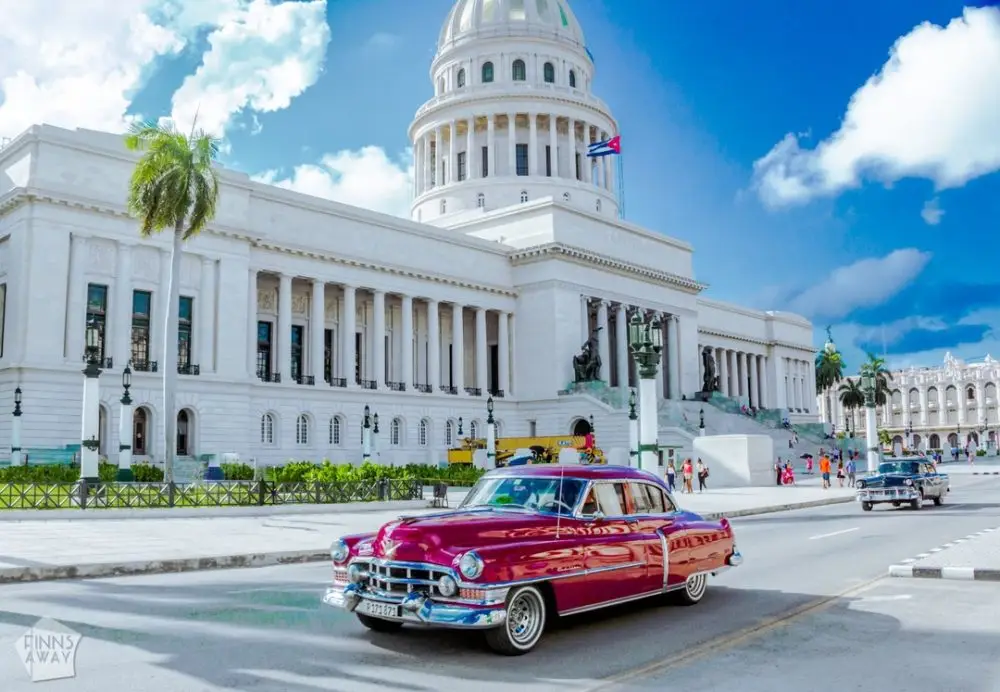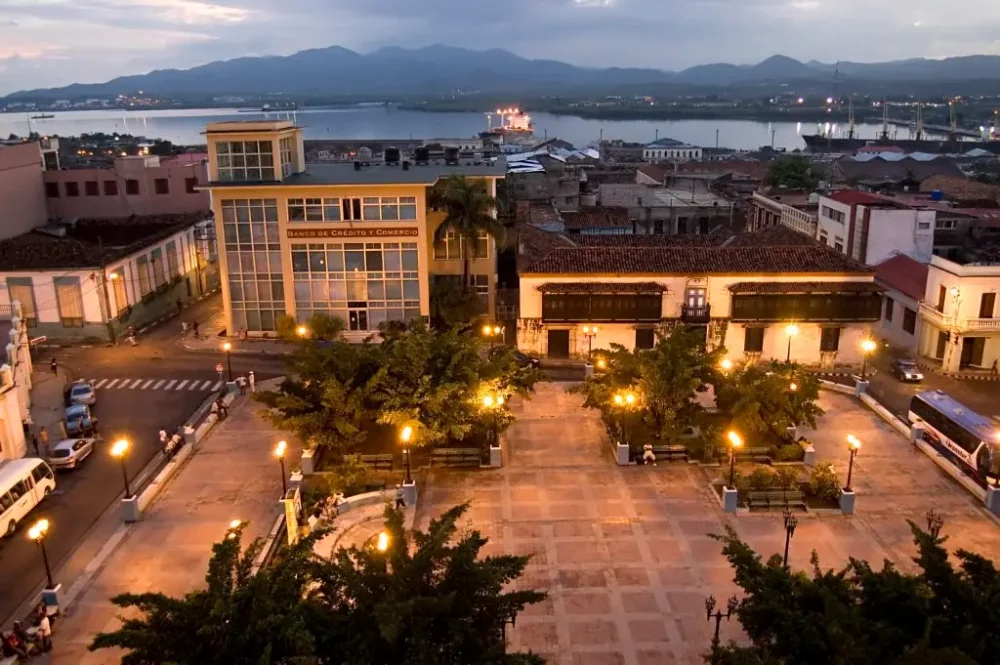Cuba is an island in the Caribbean and a unique place where culture, nature and history intertwine. Here you can relax on white-sand beaches and dive into the underwater world. It’s a pleasure to stroll through the narrow streets of ancient towns and sample traditional dishes. What else to do in Cuba? This question worries many travellers, because the choice is incredibly wide. In this article, we will answer it in detail.

Variety of entertainment on the island
The island attracts tourists with its exotic landscapes, warm ocean waters and rich heritage. Varadero is great for beach holidays. In Old Havana you can visit historical excursions. Active leisure lovers will enjoy diving, yachting and surfing. All this makes the trip bright and unforgettable.
Cuba’s beaches: where to find perfect sand and azure water
 Golden sand and azure waters – the beaches here are known for being clean and exotic.
Golden sand and azure waters – the beaches here are known for being clean and exotic.
Cuba has over 200 beaches and each has its own unique atmosphere. The most popular ones are:
- Varadero is Cuba’s main resort and offers a comfortable holiday environment. There are luxurious hotels, cosy restaurants and entertainment centres.
- Playa Pilar is one of the most picturesque places on the island. The white sand, clear water and rich underwater world make it ideal for a secluded holiday.
- Cayo Coco is a protected area with stunning nature. Here you can see pink flamingos, walk through mangrove forests and enjoy the silence.
For lovers of active holidays in Cuba, the beaches offer plenty of entertainment:
- Surfing – great waves at Playa Los Cocos and Playa Baracoa;
- Kitesurfing – popular spots in Cayo Guillermo and Punta Canaque;
- Diving – stunning underwater landscapes off the coast of Cayo Largo. Here you can see shipwrecks, caves and exotic marine life;
- Yachting – travelling along the coast of Cuba, exploring wild beaches and uninhabited islands.
The choice of beach depends on preference: a luxury hotel, diving by the reefs or surfing the ocean waves. Cuba offers a variety of holiday options, allowing you to enjoy the atmosphere and beautiful landscapes.
Cuba’s colonial architecture: a living legacy of the Spanish era
Cuba’s architecture is the epitome of Spanish influence. The buildings built in the XVI-XVIII centuries still preserve the atmosphere of those times. The island is rich not only in natural beauty, but also in architectural monuments. Many of them are included in the UNESCO World Heritage List.
Old Havana is a true open-air museum. Narrow streets, old houses, balconies with wrought iron lattices and majestic cathedrals. The central square, surrounded by baroque buildings, looks as if time has stopped here. In Trinidad, it feels like time has stood still. The narrow streets are paved with stone and the houses are painted in soft pastel colours. You can smell the aroma of cane rum in the air.
Camagüey is known for its confusing layout. The city was built to confuse the pirates who frequently raided the area.
Each city in Cuba tells its own story, intertwining culture, revolution and the heritage of past centuries.
What to see in Cuba: top historical and natural sights
Cuba is not only about beaches, but also about its rich history, nature and revolutionary spirit. Among the must-see places to visit, stand out:
- The Che Guevara Mausoleum is a memorial complex in Santa Clara where the remains of the revolutionary rest. Personal belongings and photographs are displayed here. The exhibition tells about his life and his role in the Cuban Revolution.
- Bellamar Cave is Cuba’s oldest cave, more than 300,000 years old. Its galleries are decorated with giant stalactites, stalagmites and underground reservoirs with crystal clear water.
- Humboldt National Park is a protected natural area with a unique natural environment. It is home to rare species of birds, amphibians and plants. Walks along the reserve’s routes allow you to see Cuba in all its natural beauty.
- The Viñales Valley is a natural park where the best tobacco in Cuba is grown. Here you can visit the farms and learn about the cigar-making process. The surrounding area is impressive with picturesque limestone mountains covered with dense greenery. These landscapes create an unforgettable atmosphere.
- Santiago de Cuba is a city rich in history and culture. It is worth visiting the Castillo del Morro fortress, checking out the museums and enjoying live Cuban music in the local clubs.
Cuban cuisine: what to try
Cuba’s culinary traditions are a fusion of Spanish, African and Caribbean traditions. The main ingredients are rice, beans, pork, seafood, tropical fruits and aromatic spices.
National dishes that are worth trying:
- Ropa Vieja – beef stewed with vegetables and spices in a rich tomato sauce. It is Cuba’s most famous dish, served with rice or fried bananas.
- Moros y Cristianos is a traditional Cuban dish consisting of black beans and white rice. It symbolises the fusion of Spanish and African culinary traditions.
- Tostones are fried green bananas that are first mashed, then re-roasted to achieve a crunchy texture. They are served with garlic sauce.
- Vaca Frita – roasted beef with lime and onion, giving the meat a crispy crust and intense flavour.
- Arroz con Pollo is a Cuban version of chicken and rice cooked with spices, vegetables and saffron.
Cuba’s best restaurants offer traditional dishes with rich flavours. In addition, street markets and small cafés offer authentic local cuisine. Here you can enjoy your meal in a cosy and relaxed atmosphere.

What to do in Cuba?
 The island offers endless possibilities for holidays. Here you can enjoy the ocean, explore nature, diving, yachting or surfing. History lovers will discover fascinating excursions, and gourmets – new gastronomic experiences. Cuba is more than just a holiday. It is a complete immersion into the atmosphere of the Caribbean, where culture, history and exoticism are intertwined.
The island offers endless possibilities for holidays. Here you can enjoy the ocean, explore nature, diving, yachting or surfing. History lovers will discover fascinating excursions, and gourmets – new gastronomic experiences. Cuba is more than just a holiday. It is a complete immersion into the atmosphere of the Caribbean, where culture, history and exoticism are intertwined.
 en
en  ar
ar  de
de  es
es  fr
fr  nl
nl  hi
hi  it
it  pt
pt  el
el 



